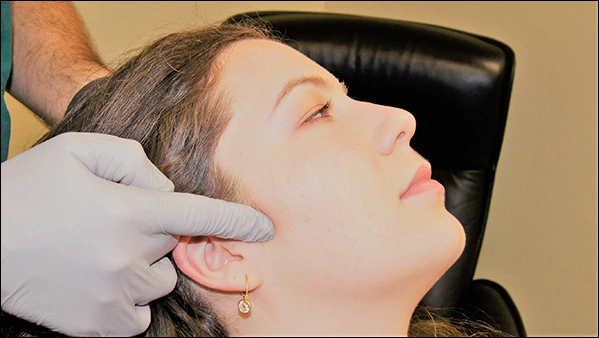Sleep Apnea Management for the Dentist
Course Number: 578
Course Contents
Oral Appliance Patient Evaluation
When considering MAD for OSA, several criteria must be considered:
The patient is interested in MAD as an alternative to PAP
There should be 5-6 healthy teeth per quadrant
All necessary dental work should be treated prior to fabrication of a MAD
Initial evaluation should include an assessment of oral health to include soft tissues, the periodontium, the tongue, uvula and soft palate. Endodontic sensibility testing should be performed on any tooth with a questionable pulpal status. The patient’s periodontal condition should include checking for attachment loss and any excessive mobility. Select intraoral radiographs if not current, should be obtained to rule out any dental, pulpal, or periodontal pathosis. Tonsil grade and Mallampati score should be annotated, but their severity is not strongly correlated with OSA presence or severity.
Additionally, an examination of the temporomandibular joint (TMJ) should be performed. The TMJ and its associated musculature such as the masseter and temporalis should be free of pain and should be non-tender to palpation. It is recommended to palpate with a force strong enough to make the fingernail blanch. The temporal tendon should be palpated intraorally from the retromolar pad and then proceed superiorly along the anterior ramus of the mandible. The lateral pterygoid (LP) cannot be palpated directly. Thus a LP provocation test should be performed. The dentist would place their thumb on the patient’s chin and ask the patient to protrude against the thumb while the dentist provides some moderate resistance. If the patient meets the criteria for a temporomandibular disorder, then MAD therapy may exacerbate this condition and might preclude the patient from this form of treatment.
Assessing jaw range of motion (ROM): measuring from the incisal edge of the mandibular incisors to the incisal edge of the maxillary incisors on maximum opening will give you the patient’s active range of motion. A normal TMJ ROM is 35-50 mm. Some providers add the amount of overbite in mm (if present) to this number. Lateral ROM is roughly 7-12 mm (Figure 8).
Figure 8.
Digital palpation of the lateral pole of the condyle of the right temporomandibular joint to rule out the presence of pre-existing jaw pain.
If not performed at an earlier appointment, a STOP-BANG score should be obtained. The ESS should also be recorded. After MAD delivery, these inventories can be repeated to assess quality of life (QOL) changes. QOL improvements can be pointed out after MAD treatment of the patient’s OSA to highlight their improvement in health. This yields a great deal of satisfaction from the patient.


